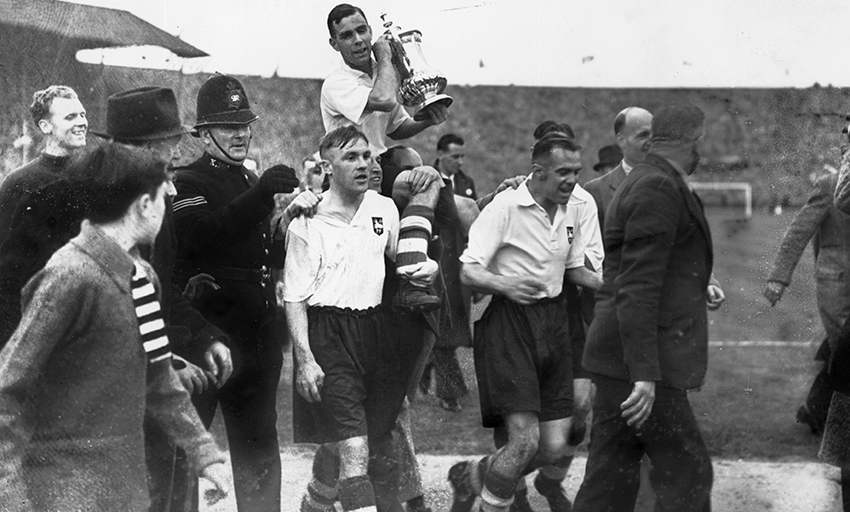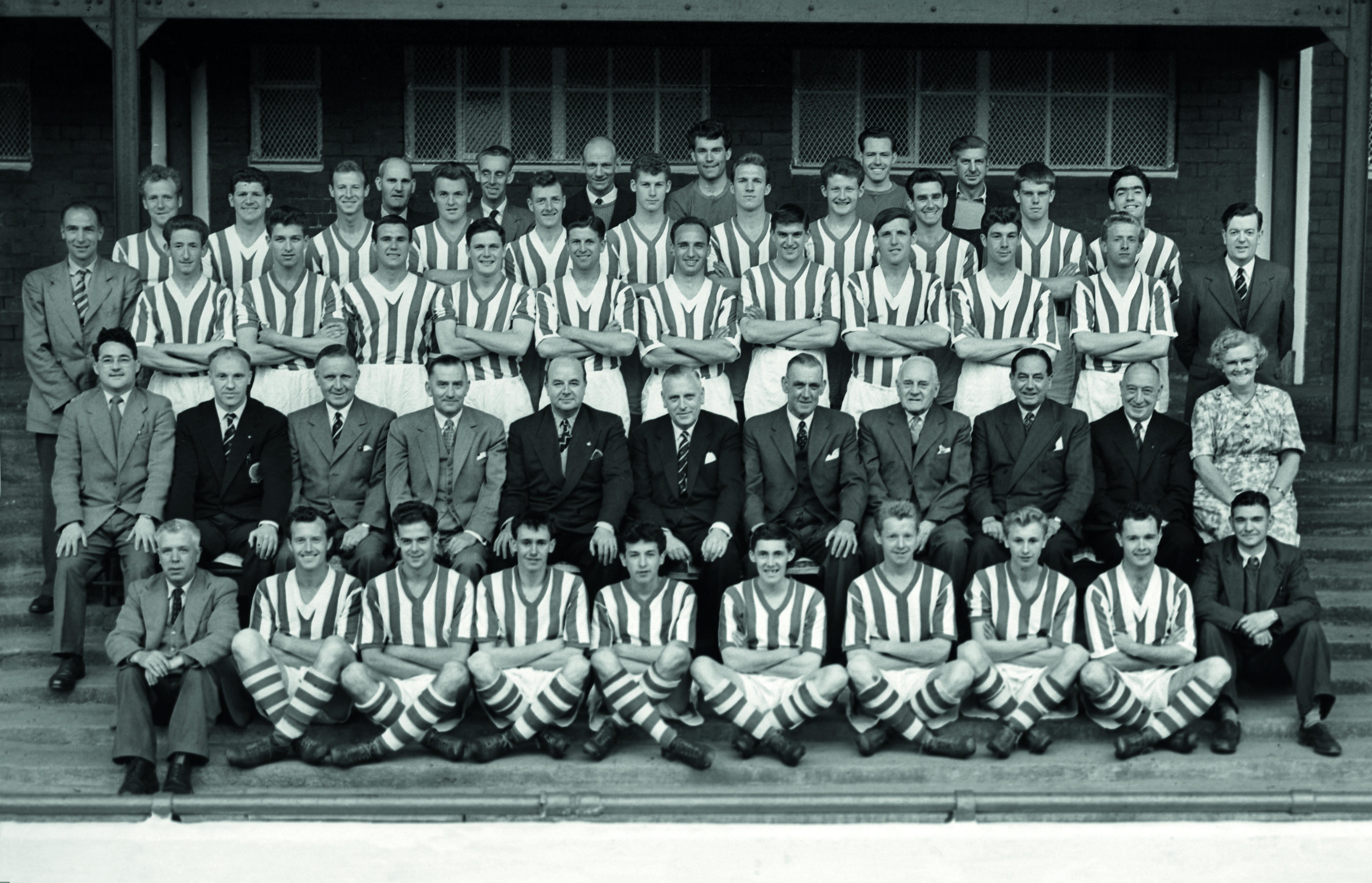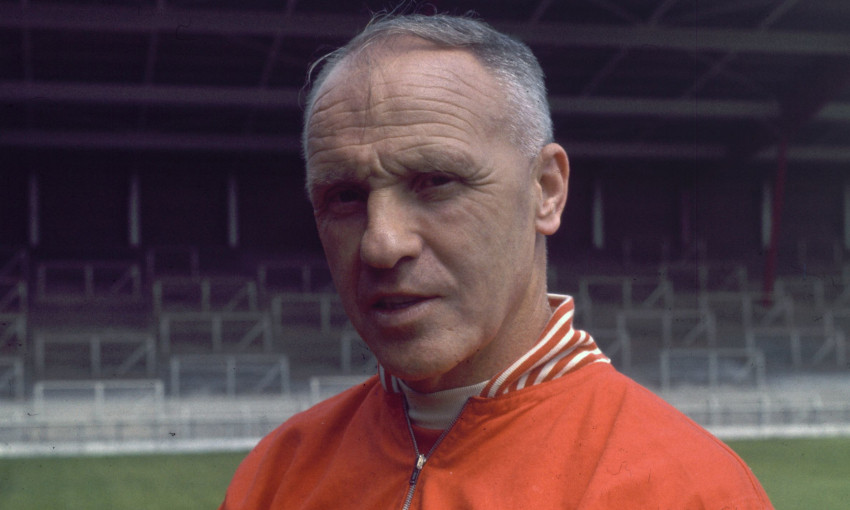'I see you've been promoted, son' - Shankly's decade-long journey to Liverpool
When Bill Shankly first walked through the doors, he found a club in disarray.
The pitch was a rutted quagmire, the stadium didn’t have electricity, the team was in trouble after a wretched start to the campaign and there were scarcely any funds available to remedy the situation. But he believed he could make a difference. He believed, as per the inscription etched onto the base of his statue outside the Kop many years later, that he could make the people happy.
However, the club wasn’t Liverpool, the month wasn’t December 1959 and the people in question weren’t Scousers. They were Cumbrians. This was Borough Park in January 1954, where the 40-year-old’s duties would include distributing players’ wages and answering the phone. Where the previous manager had resigned from the almost impossible task of averting Workington AFC’s relegation from the Third Division North.
Almost exactly five years later, on a similarly awful pitch a few hundred miles south, Liverpool FC were knocked out of the FA Cup by non-league Worcester City. They would end that season seven points short of promotion from the old Second Division, where they had been marooned for the past five years. Anfield was not in much better condition than Borough Park, and soon they would be without a manager, Phil Taylor departing after three years of mostly fruitless toil that November.
We know the rest of the story, don’t we? Shankly is selected as Taylor’s replacement and leaves 15 years later having lifted the Reds to the pinnacle of English football, set them on a path to European superpower status, and made himself a living legend in the process.
The symbiosis between Shankly, the club and the people of the city was such that it’s impossible to imagine anyone else stewarding Liverpool through the 1960s and early 1970s, but nothing about his appointment or what followed it was inevitable. Liverpool didn’t just need a manager in the winter of ’59, they needed a saviour. So why, of all people, was it a former Workington boss they settled upon? Why was a man that had never won a trophy nor worked any higher than the Second Division in his decade-long management career the obvious – indeed, the only – choice?
To begin to answer that question you need to travel even further back in time, to a ground that might not have been quite as dilapidated as Borough Park but wasn’t far off it.
Described as ‘like a big wooden rabbit hutch’ by Paddy Waters – a former teammate of Shankly’s and one of his first signings as a manager – Brunton Park is where the Ayrshireman’s love affair with the dugout first bloomed in the spring of 1949. After 17 years’ service at Preston North End, with whom he’d won an FA Cup in 1938, Shankly had resisted the great Tom Finney’s pleas to stay at Deepdale in favour of kicking off his management career aged 35.
He and his young family were moving up the country, from Lancashire to Cumbria, but down the league pyramid, from First Division Preston to Carlisle United of the Third Division North.

Full of run-down grounds and parsimonious chairmen, exceedingly difficult to escape from with just one promotion spot up for grabs, that division would become the bane of the former Scotland international’s life over the course of the next six years, but it was also the making of him. From building up his team’s confidence by talking down the opposition, to those infamous five-a-side games that wouldn’t end until the team he was on were winning, the same tricks of the trade that later reaped such a rich harvest at Anfield were evident at the very dawn of Shankly’s managerial career, and the turnaround he initiated at Brunton Park was similarly dramatic.
After limping to a 15th-place finish in 1949, Carlisle climbed to ninth in 1950 then third in 1951, and even managed to take Arsenal to a replay in the 1950-51 FA Cup, in what was an enormous shock at the time. But the following summer Shankly had his first experience of the Groundhog Day scenario that would plague his pre-Liverpool years – a board unable or unwilling to provide the funding needed to take their provincial club beyond where they could be carried by ‘natural enthusiasm’ alone.
After two-and-a-half years that started and ended in almost identical fashion on the opposite coast with Grimsby Town, including an agonising near-miss when the Mariners were three points shy of promotion in 1952, it was on to Workington, described as ‘a town of little history and even less future, out on a limb miles from anywhere’ in the seminal Shankly biography It’s Much More Important Than That.
This, in a funny way, was the ultimate test of the Glenbuck native’s managerial mettle. If he could work his peculiar brand of magic here, in a town where football was an ugly duckling compared to rugby league, at a club that had been elected, not promoted, to the Third Division North in 1951 and looked wholly out of their depth ever since, then surely he could work it anywhere.
Sure enough, he masterminded a miraculous escape from ‘re-election’ after taking over midway through season 1953-54, then pushed AFC up to the inconceivably cosy heights of eighth place the following term.
What was so revolutionary about Shankly’s approach at Liverpool was the way he had an influence on every facet of the club’s operations, from changing the strip to renovating the stadium, but it’s perhaps also the case that he was already in the habit of doing these things, having been forced to innovate by the financial strictures in place at his earlier clubs.
At Carlisle he used his own money to pay for new strips and take the squad to the local cinema for a spot of team-building, and even took to using the PA system to speak directly to the fans 15 minutes before every home game, in lieu of writing programme notes. At Workington, on top of the aforementioned administrative duties, he judged beauty contests, attended fundraising dances, did all his own scouting and placed an advert in the paper inviting local youngsters to come in for a trial.
It was a lot of work for not a lot of reward, however, and when in late 1955 an offer came from his former Scotland and Preston teammate Andy Beattie to be his assistant at First Division Huddersfield Town, it was time for the Shankly family – wife Nessie and two daughters – to up sticks for the fourth time in six years.
Shanks’ remit was to look after the reserves and the youngsters – including a skinny 15-year-old freshly arrived from Aberdeen by the name of Denis Law – and the impact he made was immediate.
“He made a great impression on everyone at Leeds Road, both playing staff and non-players,” explains Huddersfield’s club historian, Ian Thomas. “Denis Law recalls the players hanging on his every word, and he also remembers Shankly putting great stock in eating well; he gave instructions to the café owner on the corner of the ground to feed up the players, only the best steaks would do. Ex-Huddersfield players always remember him as a great motivator; before a match the opposition were always rubbish, but in the event of a Town victory they had just beaten a great side.”
Shankly would greet those who were dropped to the reserves with the line, “I see you’ve been promoted, son”, and with his young side performing well at a time when the first team had sunk into the Second Division and suffered so many defeats there that an immediate return was already out of the question before Christmas, it was only a matter of time before the inevitable happened. Beattie stood aside, strongly recommending Shankly as his successor, and the Scotsman’s coronation was confirmed in November 1956.
What followed were three largely frustrating years, despite the presence of future World Cup winner Ray Wilson, Law and an abundance of other young talents that Shankly had helped to mould in the reserves. Town never came near promotion, but there was a familiar alibi to fall back on: lack of transfer market backing. Ron Yeats and Ian St John, catalysts in Shankly’s first great Liverpool team of the 1960s, could have pitched up at Leeds Road as early as 1958, if only the Huddersfield board had been bold enough to act on their manager’s recommendations.

Shankly with Huddersfield, including Denis Law (third row, second from right) and Ray Wilson (third row, fourth from left)
“Had Town made those signings it’s fair to say that in all probability they would have been too strong for the Second Division,” Thomas adds. “As it happened, Law departed for Manchester City in 1960, and it would take another decade before Town returned to the top flight.”
How, then, did Liverpool chairman T.V. Williams and director Harry Latham find themselves making arguably the most significant journey from point A to point B in the club’s history on October 17, 1959, in order to corner Shankly in the Leeds Road car park and ask him the fateful question: “How would you like to manage the best club in the country?”
Some point to a phone call Matt Busby purportedly made to recommend his friend and fellow countryman. Others mention the fact Huddersfield were above Liverpool in the league at the time, or the 5-0 trouncing Shankly’s Terriers dished out to Taylor’s Reds at Leeds Road in October 1958, a game Thomas was fortunate enough to witness first-hand.
“I remember very vividly being behind the goal, right in the firing line, when Ray Wilson dribbled through a dispirited Liverpool defence to thrash home the fifth goal.”
As a matter of fact, Shankly had been on Liverpool’s radar ever since 1951, when they had interviewed him for the vacancy eventually filled by Don Welsh. The then-Carlisle boss had bridled at the committee-based method of team selection in place at Anfield, yet managed to impress Williams enough for the former cotton broker to keep a close eye on him over the years.
“I think what impressed Liverpool was his ability to find players, particularly young players, who didn’t cost anything,” Stephen F Kelly, author of It’s Much More Important Than That, tells Liverpoolfc.com. “Liverpool were not big spenders at the time, what they were looking for was a manager who could come in and look at the young players, buy cheaply at the bottom end of the market and make something of it.
“Clubs were still run by committees in the 1950s, but then the tracksuit managers began to emerge. There weren’t many of them, but Busby was one, and of course he and Shankly were very close. I think Liverpool had decided that was the kind of manager they wanted.”
On the pitch, Shankly got off to as bad a start as any Liverpool manager in history, losing 4-0 at home to Cardiff City and 3-0 away to Charlton Athletic, but off it he was already making sweeping changes, overseeing a new paintjob at Melwood and the plumbing in of the Anfield toilets – something he was particularly proud of.
When he wasn’t obsessing over football, the man known as ‘Willie’ to his family was obsessing over boxing and gangster films. His heroes were Joe Louis and James Cagney and he intended to form Liverpool into an amalgamation of the two – a pugnacious bundle of energy capable of punching up at those clubs that had made hay during the Reds’ spell in the wilderness. But if he thought his days of butting heads with board members were over, he was mistaken. Stymied in his efforts to sign Jack Charlton amongst others, Shankly was reportedly close to quitting on more than one occasion.
“Nessie talked about there being a point where he wondered if he’d been right to leave Huddersfield,” states Kelly. “It’s worth remembering, when he came in, the first signing he made was a guy called Sammy Reid from Motherwell, for about £8,000. And then he signed Kevin Lewis for a bit more, about £13,000. Sammy never made an appearance and I’m not sure Kevin made many. And the club of course could say, ‘Hang on a minute, £21,000 and these have barely played for the club.’”
Gradually, with the help of influential director Eric Sawyer, the purse strings were loosened, Yeats and St John arriving for a cumulative total of around £62,500 in the summer of 1961. The Second Division had begun to seem like an inescapable prison for Liverpool, but with the two Scotsmen on board they slipped over the wall with relative ease in 1962, scoring 99 goals and sealing the title with five games to spare after a 2-0 win over Southampton.
The line-up on that sodden April afternoon at Anfield reflected the balance Shankly had struck, featuring Yeats and Lewis – filling in for the injured St John – young guns Roger Hunt, Gerry Byrne and Ian Callaghan, and the elder statesmen Ronnie Moran, Jimmy Melia and Alan A’Court, all three of whom had played in the infamous FA Cup defeat by Worcester which set the whole chain of events in motion three years beforehand.
Finally, after 13 years’ hard labour at Carlisle, Grimsby, Workington, Huddersfield and eventually Liverpool, Shankly had won a trophy, and had something tangible to show for all his nomadic travels with Nessie and the family in tow. But it was just the beginning.
Less than 20 miles away from Glenbuck stands New Lanark mill, once owned by Robert Owen, the 19th century social reformer whose most famous quote is, “Man is the creature of circumstances.” When it comes to Shankly and the lessons learned in those trying early years of his management career, never a truer word was spoken.



